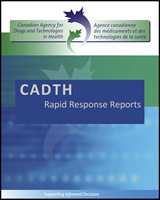Natural or synthetic opioids can be used therapeutically, recreationally, and children may be unintentionally exposed to them. Opioid addiction and abuse is a major medical and social problem all around the world. The opioids exert their biologic effects through interactions with multiple opioid receptors (μ, δ and κ). The μ-opioid receptor is attributed to respiratory depression - a main hazard of severe opioid overdose which is potentially fatal.
Opioid antagonists are commonly used as rescue medications to reverse severe opioid-induced respiratory depression. Naloxone is a non-selective, short-acting opioid receptor antagonist which acts on the μ-, δ- and κ-opioid receptors. It has been approved by Health Canada as an opioid antagonist since 1994. The most common use of naloxone is for the treatment of opioid overdose in both hospital and out-patient settings, and in rapid detoxification (being given intravenously [i.v.] when combined with other medications). Other routes of administration include intramuscular, subcutaneous, intranasal and through an endotracheal tube.
The administration of naloxone in a home or community setting for overdose prevention may be an attractive option to reduce over-dose related deaths as it appears to be feasible and safe. In Canada, there are at least four cities with local overdose prevention and response programs involving naloxone dispensing, while British Columbia has recently launched a provincial program. Currently in Ontario, naloxone is not listed on the formulary or available through the province’s Exceptional Access Program.
The purpose of this review is to assess the evidence of the clinical effectiveness and cost-effectiveness of the administration of naloxone in a community or home setting versus naloxone administered by a health professional. Evidence-based guidelines and recommendations for the dosing of naloxone in this setting will also be discussed.
Disclaimer: The Rapid Response Service is an information service for those involved in planning and providing health care in Canada. Rapid responses are based on a limited literature search and are not comprehensive, systematic reviews. The intent is to provide a list of sources of the best evidence on the topic that CADTH could identify using all reasonable efforts within the time allowed. Rapid responses should be considered along with other types of information and health care considerations. The information included in this response is not intended to replace professional medical advice, nor should it be construed as a recommendation for or against the use of a particular health technology. Readers are also cautioned that a lack of good quality evidence does not necessarily mean a lack of effectiveness particularly in the case of new and emerging health technologies, for which little information can be found, but which may in future prove to be effective. While CADTH has taken care in the preparation of the report to ensure that its contents are accurate, complete and up to date, CADTH does not make any guarantee to that effect. CADTH is not liable for any loss or damages resulting from use of the information in the report.

